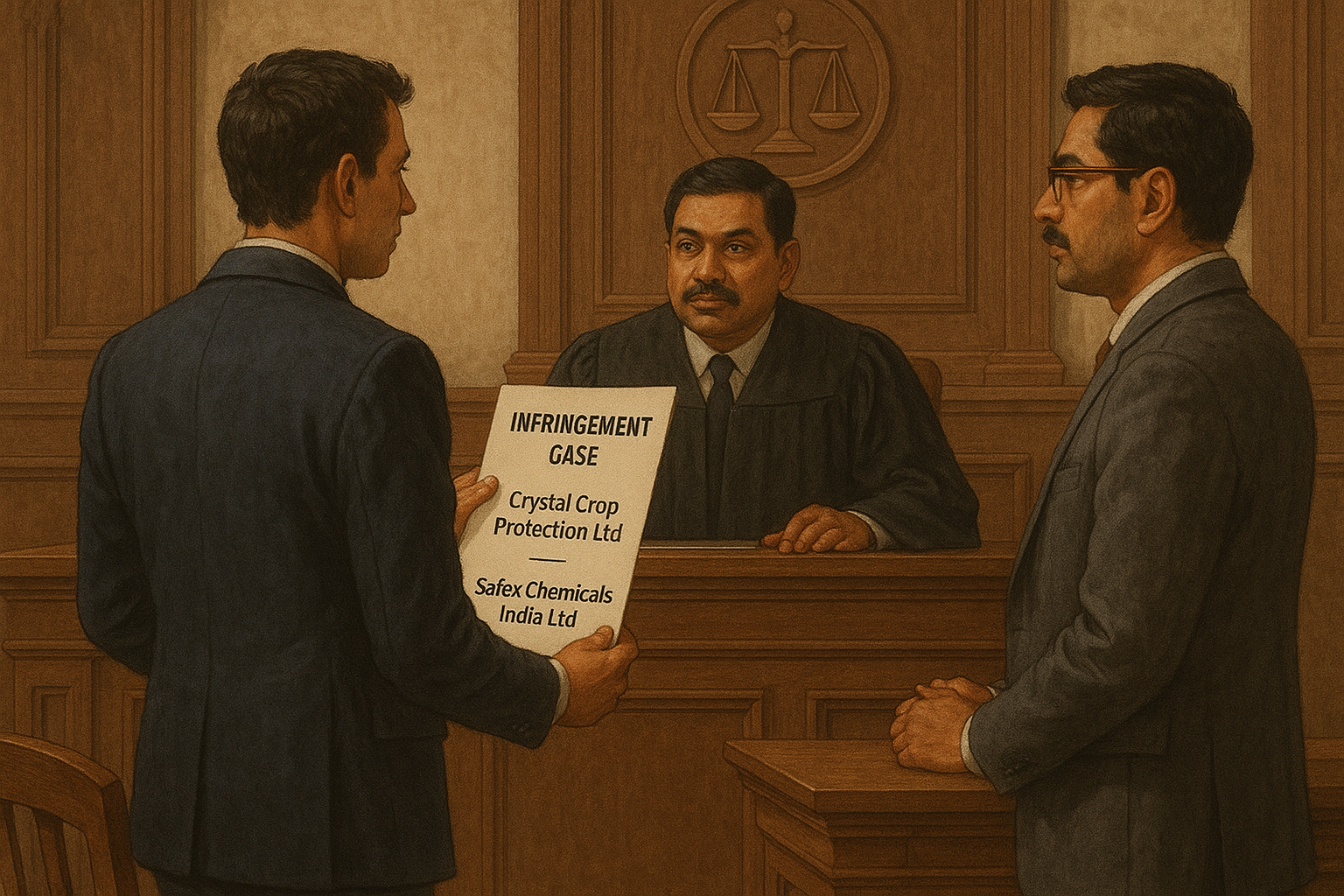
SUMMARY
A patent infringement suit was filed by Crystal Crop Protection Ltd. (Plaintiff) against Safex Chemicals India Ltd. (Defendant) for its Indian Patent number 417213 for “Weedicidal formulation and method of manufacture thereof”.
The plaintiff was seeking a permanent injunction against the defendant and their affiliates. In this notable case, the Delhi High Court ruled in favour of Safex Chemicals India Ltd., outlining the absence of complete specifications in the infringing products.
WHAT DID THE PLAINTIFF CLAIM?
The Plaintiff, Crystal Crop Protection Ltd, states that its patented herbicide formulation for controlling weed production, particularly for the wheat crop, was infringed by Safex Chemicals India Ltd.
The plaintiff’s product is popularly known as ACM-9. The components of herbicide formulation include Clodinafop Propargyl (9%) and Metribuzin (20%). Both these components are in the ratio of 1:2.2, along with a dyeing agent which facilitates the visual assessment through color marking. However, the plaintiff claims that the dyeing agent is not the essential component of the product.

THE DEFENDANT’s ARGUMENTS
The defendant, Safex Chemicals India Ltd., agreed that they are using the same components, i.e., Clodinafop Propargyl and Metribuzin, in a similar ratio, but they refuse to use any dyeing agent in their product. They argued that the dye is not just an additive but is significant to the plaintiff’s invention.
The defendant further claimed, based on the patent’s prosecution history, that originally the dye was disclosed in dependent claims but was later moved to independent claims, displaying the presence of dye as a distinguishing feature.
THE COURT’s VERDICT
The Delhi High Court noted that the Manual of Patent Office Practice and Procedure, 2019, and international jurisprudence required all essential technical features to be included in independent claims. Therefore, the court considered that all the elements present in the independent claim are essential for the invention and must be present in the infringement suit.
The court also performed the Actavis test. The Court considered three questions: whether the variant achieved substantially the same result in substantially the same way; whether it would be obvious to a skilled person that it did; and whether the patentee intended strict compliance with the literal wording of the claim. The court concluded that the first requirement had not been satisfied since the defendant’s product does not obtain the same result without the dyeing substance.
The court stated that Crystal Crop Protection Ltd has failed to make a prima facie case of patent infringement against Safex Chemicals, as the latter lacks any dyeing substance in its products. The court holds that the dyeing agent or pigment cannot be termed as a non-essential element of the suit patent. The plaintiff has highlighted the advantages derived on account of the presence of ‘dyeing agent or pigment’ in its invention. Accordingly, the court denied the request of Crystal for an interim injunction. However, it asked Safex Chemicals to maintain half-yearly accounts of the manufacture and sale of the impugned products.
TAKEAWAYS FROM THE VERDICT
1. COMPLETE SPECIFICATION IS SACROSANCT: The result highlights the importance of including all elements present in the independent claims in an infringement suit. The verdict may help in improving the patent drafting strategies in the following ways:
a. If a feature is crucial to the invention, make sure it’s included consistently throughout.
b. Avoid strategic additions that you can’t enforce later. Anticipate how amendments might limit flexibility later.
c. Ensure specification and prosecution are aligned. Highlighting a feature during prosecution and minimizing its importance in enforcement leads to estoppel.
2. DOCTRINE OF EQUIVALENTS IS LIMITED: This doctrine allows for a patent to be infringed even if the infringing product or process doesn’t match the claim, but instead uses elements that perform the same function in the same way to achieve the same result. The court verdict limits this doctrine and highlights that the presence of elements in independent claims is presumed essential and should be present in the infringement suit.
3. NO SELECTIVE ENFORCEMENT: The court ruling suggests that if a feature is included in the draft to obtain a patent, then that feature cannot later be downplayed to stretch the scope of the invention. Initially, Crystal included the dyeing substance in the independent claim and highlighted its advantages to obtain a patent. But later, the company argues that the dyeing substance does not form part of the core invention, and it is just an additive in the formulation. The court ruled that no selective enforcement is allowed while filing an infringement case.
This decision is an alarm for patent strategists, suggesting that a complete specification isn’t just a filing document; it defines what your patent does and doesn’t cover.
Citation: Crystal Crop Protection Ltd. v. Safex Chemicals India Ltd. & Ors., CS(COMM) 196/2024 & CC(COMM) 28/2024, I.A. 5255/2024 (Del. High Ct. May 7, 2025). Available at: http://indiankanoon.org/doc/22603777/ 
